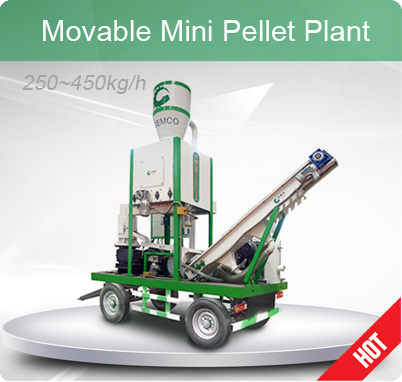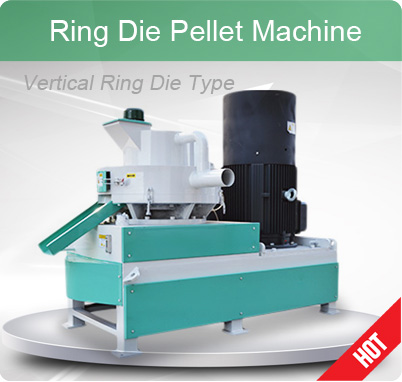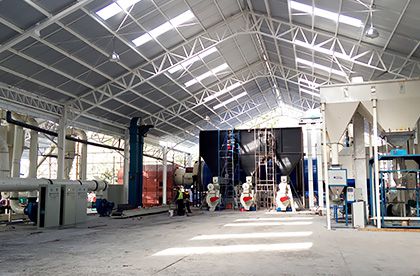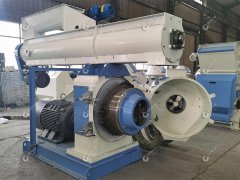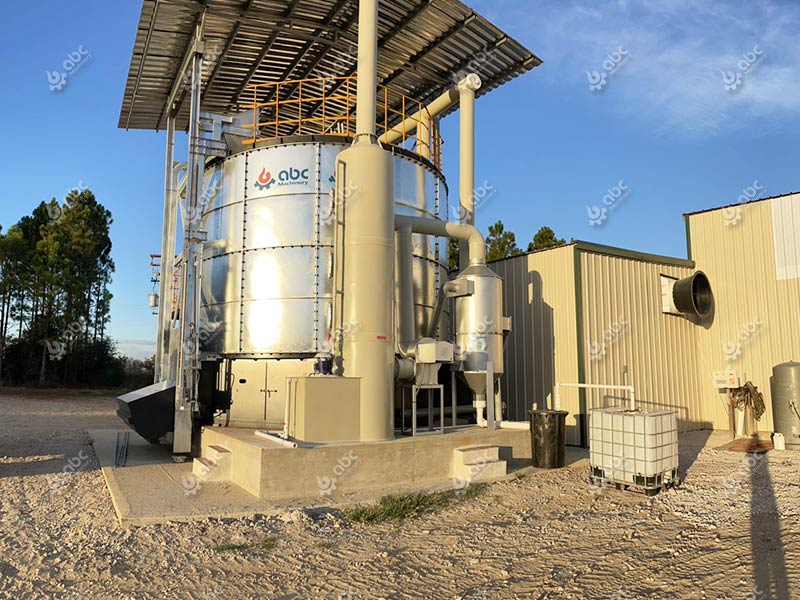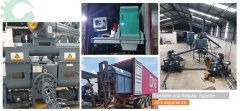Wood Pelletizer Machines Improve Biofuel Pellet Performance
Biomass fuels are an important future development in the energy sector. However, the performance of biomass fuel pellets directly affects their energy utilization efficiency and environmental impact. Improving the performance of biomass fuels is conducive to increasing energy use efficiency, reducing pollution emissions, and optimizing resource utilization. To improve the performance of biomass fuel pellets, pelletizer is an indispensable tool.
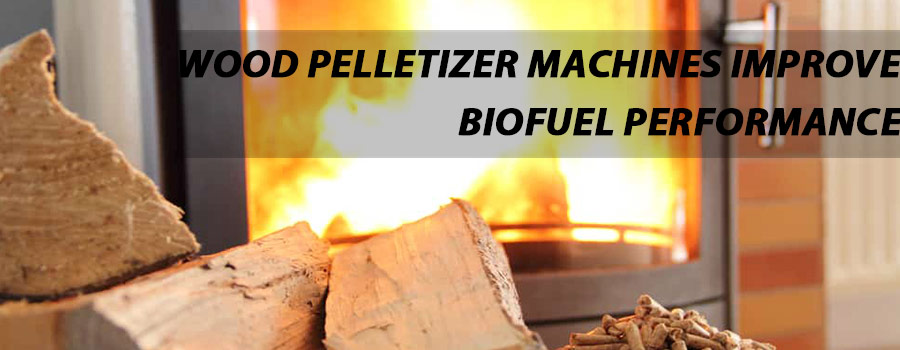
Wood Pelletizer Machines Improve Pellet Burning Performance
Key Factors Influencing Biomass Pellet Combustion Performance
Understanding the factors that influence the combustion performance of biomass pellets is important for optimizing the combustion process and improving energy efficiency. Below we will explore a few key factors to better understand the mechanisms that influence the combustion performance of biomass pellets. (Link to High Quality Pellet Standard>>)

Wood Fuel Pellets Made by Wood Pellet Pelletizing Line
- Moisture Content of the Pellet Product
Moisture content in the pellet fuel is one of the main factors affecting the combustion performance of wood fuel pellets. Pellet fuels with too much moisture content will have a lower calorific value. Generally, the ideal moisture content is 8-12%.
- Ash Content of Pellet Fuels
Ash in wood pellet fuel is a solid combustion product that affects both the combustion equipment and the environment. High ash content can lead to furnace pollution, slagging and equipment wear of stoves. Therefore, reducing the service life of combustion equipment finally.
- Size Distribution of the Pellets
Pellet size distribution of particles has an important impact on the combustion rate as well as the airflow and heat transfer in the combustion process. The combustion characteristics and emission products of particles of different sizes are also different.
| Particle size | Combustion characteristics | Emission products as a percentage (%) |
|---|---|---|
| 6 mm | High combustion efficiency, fast ignition | 78% CO2, 15% CO, 6% H2O, 1% ash |
| 8 mm | Moderate combustion efficiency, moderate ignition time | 75% CO2, 17% CO, 6% H2O, 2% ash |
| 10 mm | Lower combustion efficiency, longer ignition time | 72% CO2, 19% CO, 7% H2O, 2% ash |
- Pre-treatment of Raw Materials
The pre-treatment processes of raw materials also affect the combustion performance of pellet fuel. Therefore, to get biomass fuel pellets with high burning performance, when processing raw materials, the wood pellet production line needs to be equipped with auxiliary equipment such as wood crusher, wood chipper, hammer mill and drying machine. (Learn more about Hardwood and Softwood Raw Material Properties>>)
In addition, other factors such as the density of the biomass fuel pellets, air supply during combustion, temperature, and stoves can affect the combustion performance of wood pellet fuels. If you want to know more about the influencing factors or more about machines for making wood pellets, you can consult us to get free professional answers!
Wood Pelletizer Machines Optimizing Biomass Pellet Combustion
Biomass pelletizer machinery is a kind of equipment that processes and presses biomass raw materials into pellet materials of certain shapes and sizes. Through pelletizing, the volume of biomass fuel is greatly reduced and its density is increased, thus providing greater convenience for storage, transportation, and combustion. As the core equipment for making wood fuel pellets in wood pelletizer plant, the performance and process of the wood pelletizer machines are crucial to the combustion performance of the pellets. The following are the key ways in which wood pelletizer mills improve the combustion performance of wood pellets.
Ability of Wood Pelletizer Machine to Control Particle Size
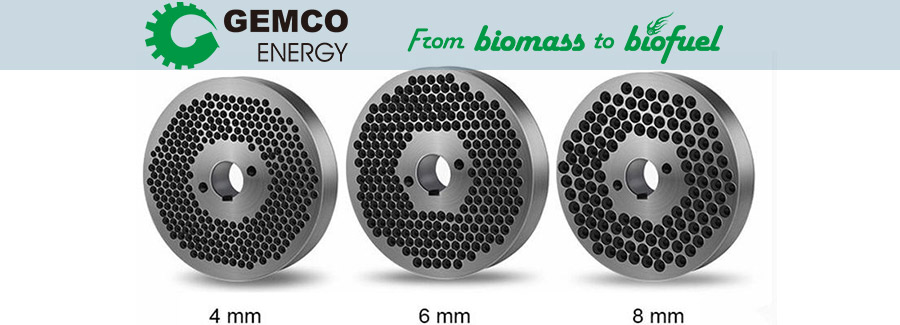
Flat Die Plates for Manufacturing Pellets with Different Diameters
The pellet mill should have precise particle size control to produce wood pellets with uniform particle size. Pellets are usually produced in diameters of 6mm - 8mm. And the length of pellets should not exceed 40mm because long pellets tend to cause clogging in the feeding system. Therefore, the pellet maker machine needs to ensure that the particle size of the pellets meets the requirements by optimizing the pellet maker screen.
Ability of Wood Pelletizer Equipment to Control Moisture Content
The biomass pelletizer equipment should be equipped with a moisture control system to ensure that the moisture content of the feedstock is within a reasonable range. The ideal moisture content for wood pellet feedstock is 8-20%, while the ideal moisture content for biomass pellet products is 8-12%. If the moisture content of the wood pellets is too high, it will lead to a decrease in combustion efficiency, an increase in energy loss, and will increase the risk of wear and clogging of the pelletizer extruder. Conversely, if the moisture content of the wood pellets is too low, it will lead to increased energy consumption of the pellet press machine, higher production costs and a decrease in the pellet yield. (Link to Proper Use of wood Pellet Makers>>)
Ability of Wood Pelletizer Mill to Control Temperature and Pressure
Proper temperature and pressure control during the pelletizer system can help increase the density and hardness of the wood pellets and improve their burning properties. Wood pellet plants are often equipped with coolers to help cool the pellets quickly, stabilize the pellet structure, and improve storage stability. The pressure in the pelletizer channel is determined by the compression ratio. The compression ratio is the ratio of the aperture diameter to the length of the channel. The compression ratios for woody biomass pelletizing are usually 1:3 and 1:5. It is important to note that as the compression channel becomes longer, the temperature inside the same channel will increase along with the pellet hardness. (Link to Maintenance of Wood Pellet Making Machines>>)
Structural Optimization of Wood Pelletizer Machinery
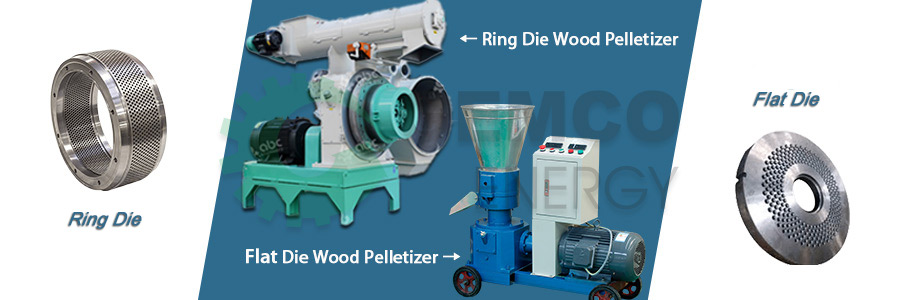
Ring Die Pelletizer Machine Design and Flat Die Pelletizer Machine Design
The structure and design of the industrial pelletizer machine is optimized for different raw materials or different product requirements. One of the key points to note is that the pelletizing equipment specially designed for a certain raw material can not be easily used for another raw material. The relevant parameters of pelletizer mills should be adjusted with the raw material.
- Thickness of the Mold: According to the hardness of the raw material, particle size and pelleting pressure.
- Length of the Channels: According to the ease of processing of the raw material.
- Number, Length, and Diameter of The Rotary Holes: According to the characteristics of the raw material and the characteristics of the pellets.
- Number, Diameter, and Width of Rollers: According to the characteristics of the raw material and the characteristics of the pellets.
- Shape of Rollers (Cylindrical or Conical) of The Flat Die Pelletizing Equipment: According to the raw material characteristics.
Click the button below to get a free consultation on pelletizer prices and to request a pelletizer design PDF.
Elevate Pelletizing to Perfection With GEMCO



